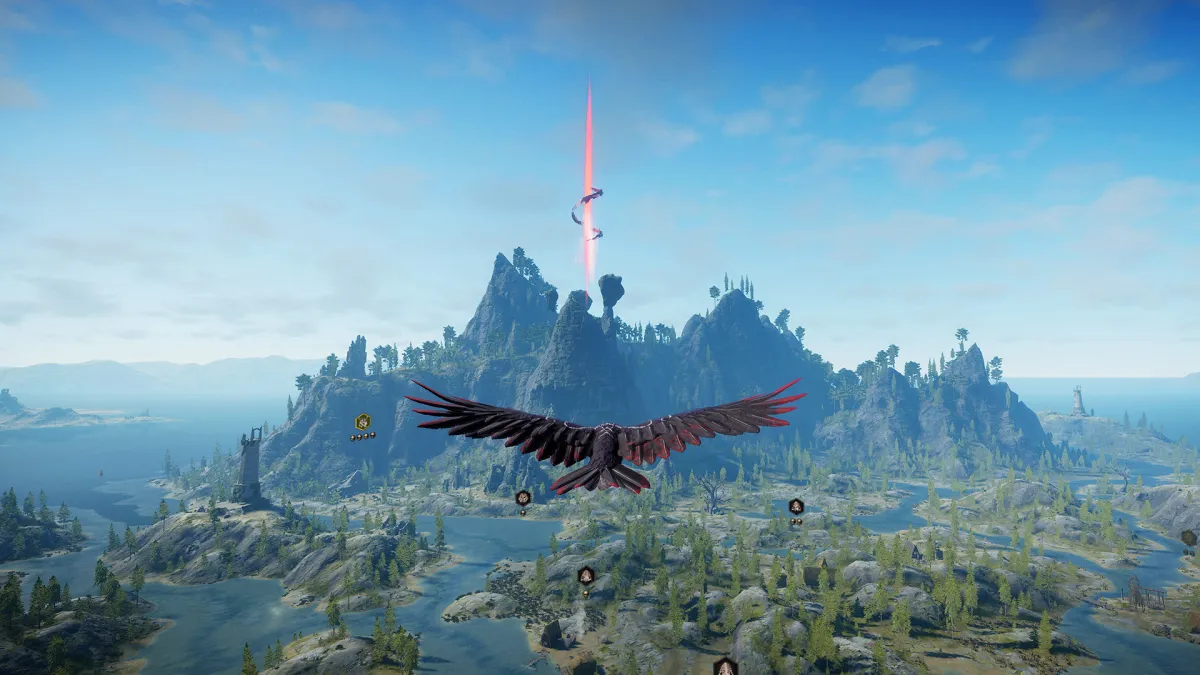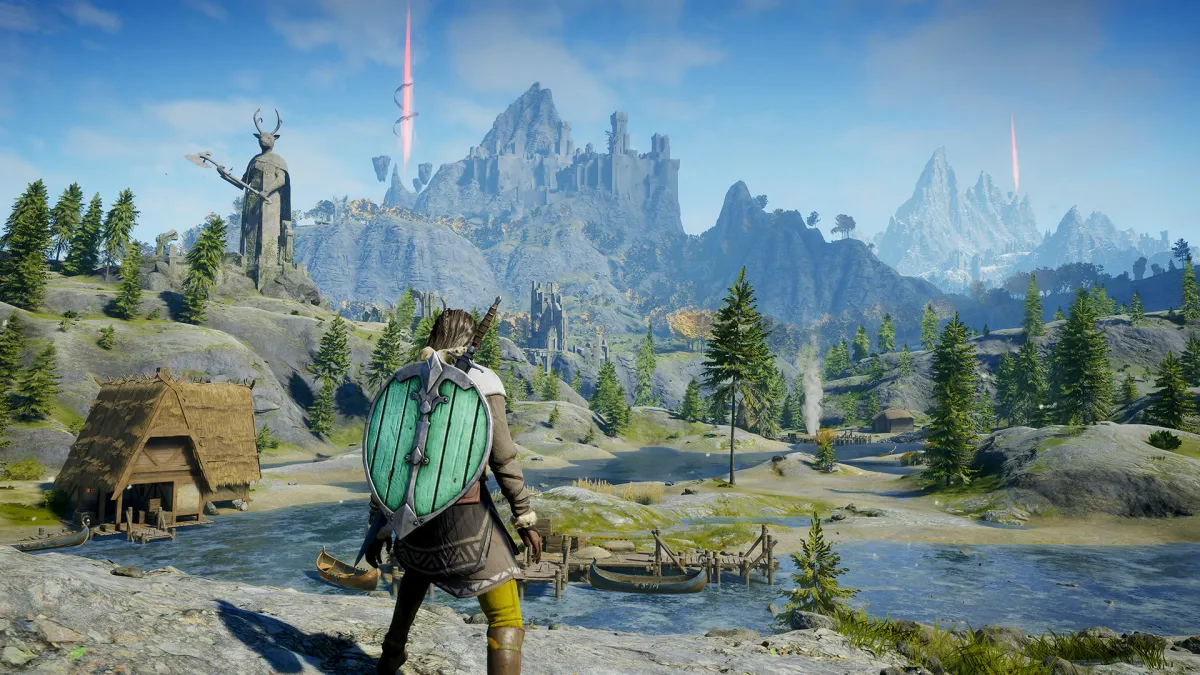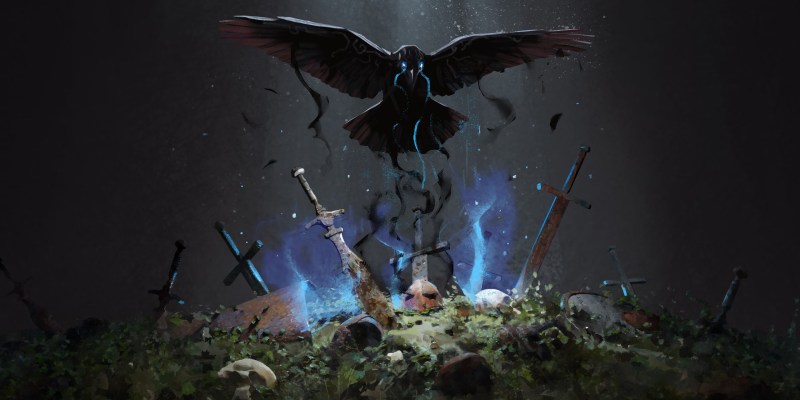Ravenbound is a 3D action roguelite that had a demo out recently for preview for Steam Next Fest. In each fight, you block, perfect block, dodge, perfect dodge, light attack, and heavy attack your enemies with fantasy-themed weapons. It’s a fast-paced combat system, and it feels fluid but a bit flimsy, mainly because enemies take a lot of attacks to defeat.
The structure of the game is an odd but interesting twist on the roguelite formula. It’s structured more or less like an open-world game with waypoints. You’re immediately told where your objective is, and getting there is no obstacle because you can just transform into a raven and fly over any potential combat. I didn’t find any aerial enemies or get pulled down to the ground; I just flew to wherever I wanted.
That makes flying a glorified encounter selection system. There’s a village to visit where you can replenish your health, buy upgrades, gamble, and take a sidequest, but other than that, there are fights of different difficulty levels, each with unknown rewards. You simply fly above the landscape as a raven, deciding whether you want to fight some enemies to get stronger or go to your objective.

Of course, in each fight you risk losing health, but you could gain a chance to draw a card by gathering resources or opening a chest. These cards can give you relics that grant special effects to your character, better equipment to protect yourself or deal extra damage, or money. Playing each card requires mana, which can also be drawn in differing quantities and makes each card you play a trade-off. Do I want the better armor, or do I want to deal extra damage to bleeding enemies for one less mana?
Fighting is the only way to get cards, and cards strengthen your character. You could skip every fight and go straight to the main objective, but you might not be strong enough. If you take too many fights, you might lose too much health and be unable to defeat the enemies at the main objective. You might also accrue Hatred, a kind of corruption that increases enemy health and reduces your card choices, when taking rewards from your fights. It’s best cleansed by completing your objective, giving an incentive to move on eventually.
This is different from the majority of roguelite maps, which nowadays have coalesced around select-a-path-style systems similar to Slay the Spire. Many games also use a push-your-luck system like in FTL, where you can choose to hang around and build strength or rush to the end, but there’s a wave of danger you need to outrun. Ravenbound is closer to the push-your-luck systems but gives even greater freedom, allowing you to spend longer building strength or skip all the encounters between you and the objective.

Upon each death, you unlock new cards drawable in future Ravenbound runs, get a selection of characters to use based on traits you’ve unlocked, and can spend points to unlock new weapons for those characters to be randomly assigned.
I enjoyed flying over a potential fight, transforming back into a human or bipedal fantasy wolf-person, and then falling on top of my enemies with an aerial strike. That said, there are a few blemishes here. The combat isn’t perfect, with animations sometimes being hard to read, attacks doing too little damage to enemies, and too many enemies being potentially overwhelming to deal with in a way that isn’t fun. The story also didn’t do much for me. I encountered a couple of minor glitches too, and at least in the demo preview, Ravenbound had weird difficulty spikes.
All that said, Ravenbound has the core of a very interesting roguelite and varied combat featuring a dozen or so weapon types. Ravenbound is listed as “Coming Soon” on Steam, so I can’t say how soon it’ll be out. But whenever it releases, it’ll be a roguelite with a mission structure unlike any other I’ve played.
